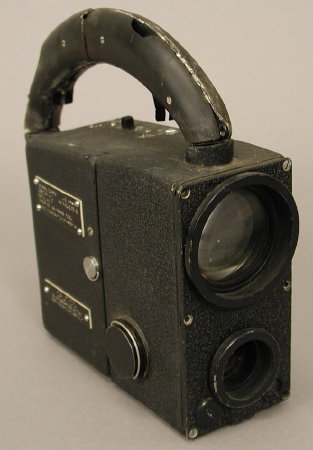Object ID:
2007.33.4
Title:
U.S. Signal Corps Sensory Aid
Creator:
Cranberg, Lawrence
Description:
Rectangular aluminum case coated with a black textured enamel; aluminum reinforced black rubber handle in top with two hanging loops and a tinplate tactile readout at handle base; two recessed lenses on front, larger 2.25" dia. lens stacked over smaller 1.125" dia. lens; hatch on right proper side opens with rotary dial to reveal battery compartment; labels on hatch, "SIGNAL CORPS U.S. ARMY/SENSORY AID AM/PVO-2(XE-2)/SERIAL NO. 7/RADIO CORPORATION OF AMERICA"; sliding on/off toggle on top of case.
Dimensions:
H-9 W-3.125 D-9.625 inches
Date:
1950
Made by:
Radio Corporation of America (RCA); Cranberg, Lawrence
Provenance:
Designed by Lawrence Cranberg at the U.S. Army Signal Corp Engineering Lab in 1943. Twenty-five experimental units were manufactured by RCA by 1950, when Haverford College was contracted to field test them by the Veterans Administration. Haverford subcontracted the work to Biophysical Instruments, Inc., whose study led directly to the development of the G-5 Obstacle Detector and its related versions.
Cranberg's device sent out a beam of light, which when reflected off an obstacle/object, was detected by the machine. A vibrating button in the handle would suggest the distance from the object by varying the frequency of the vibration.
Cranberg's device sent out a beam of light, which when reflected off an obstacle/object, was detected by the machine. A vibrating button in the handle would suggest the distance from the object by varying the frequency of the vibration.
Credit Line:
Gift of Association for Education and Rehabilitation of the Blind and Visually Impaired
